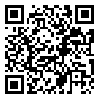Volume 28 - Supplementary
IBJ 2024, 28 - Supplementary: 368-368 |
Back to browse issues page
Download citation:
BibTeX | RIS | EndNote | Medlars | ProCite | Reference Manager | RefWorks
Send citation to:



BibTeX | RIS | EndNote | Medlars | ProCite | Reference Manager | RefWorks
Send citation to:
Heidari Sarvestani M, Akbarzadeh M. Frequency of Herbal Medicine Use Among Women of Reproductive Age with Polycystic Ovary Syndrome. IBJ 2024; 28 :368-368
URL: http://ibj.pasteur.ac.ir/article-1-4807-en.html
URL: http://ibj.pasteur.ac.ir/article-1-4807-en.html
Abstract:
Introduction: Polycystic ovary syndrome (PCO) is the most common endocrine disorder, and its common phenotypes are hirsutism, dysmenorrhea, and oligomenorrhea. Due to the side effects of long-term use and the possible minor effects of various drug treatments, studies on complementary medicine were considered in these patients. Many herbs are used to improve different aspects of PCOS. With this information in mind, we aimed to assess the frequency of herbal medicine use among women of reproductive age with polycyctic oveary syndrome.
Methods and Materials: In this descriptive study, the consumption of herbal and medical drugs in 80 women of reproductive age with PCOS was completed and investigated through a questionnaire.
Results: Results showed that the average age of the patients was 23.30 ± 5.73. Among 80 patients, 21 individuals (26.3%) used only herbal medicines, 15 (18.8%) employed medical drugs alone, 18 (22.5%) utilized herbal and medical drugs at the same time, and 26 (32.5%) did not use these medications. No pharmaceutical drugs were found. The herbal medicines utilized included Anethum graveolens, Thymus vulgaris, Salvia officinalis, saffron, tea, and chamomile. These herbal medicines were employed by the patients to reduce dysmenorrhoea and increase menstrual flow, and regulate menstrual cycles.
Conclusion and Discussion: Different plants can cause beneficial effects in improving different aspects of this syndrome, and considering the high level of willingness to use herbal medicines, its use in these patients can be considered a valuable option. However, more studies are needed to investigate their mechanism and health.

Methods and Materials: In this descriptive study, the consumption of herbal and medical drugs in 80 women of reproductive age with PCOS was completed and investigated through a questionnaire.
Results: Results showed that the average age of the patients was 23.30 ± 5.73. Among 80 patients, 21 individuals (26.3%) used only herbal medicines, 15 (18.8%) employed medical drugs alone, 18 (22.5%) utilized herbal and medical drugs at the same time, and 26 (32.5%) did not use these medications. No pharmaceutical drugs were found. The herbal medicines utilized included Anethum graveolens, Thymus vulgaris, Salvia officinalis, saffron, tea, and chamomile. These herbal medicines were employed by the patients to reduce dysmenorrhoea and increase menstrual flow, and regulate menstrual cycles.
Conclusion and Discussion: Different plants can cause beneficial effects in improving different aspects of this syndrome, and considering the high level of willingness to use herbal medicines, its use in these patients can be considered a valuable option. However, more studies are needed to investigate their mechanism and health.

| Rights and permissions | |
 |
This work is licensed under a Creative Commons Attribution-NonCommercial 4.0 International License. |







.png)
